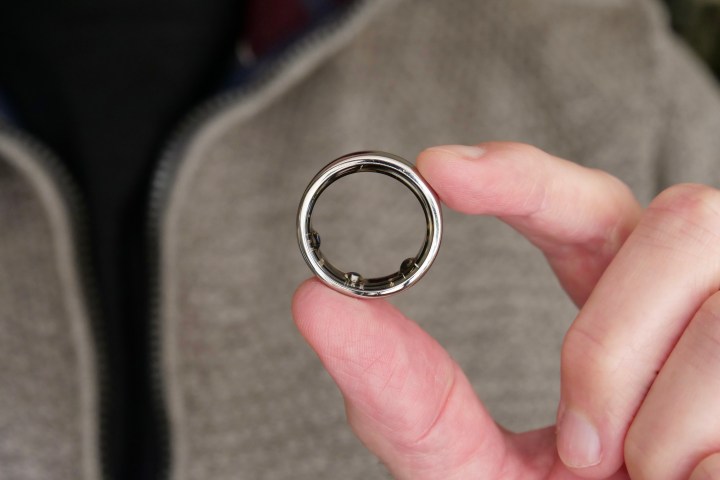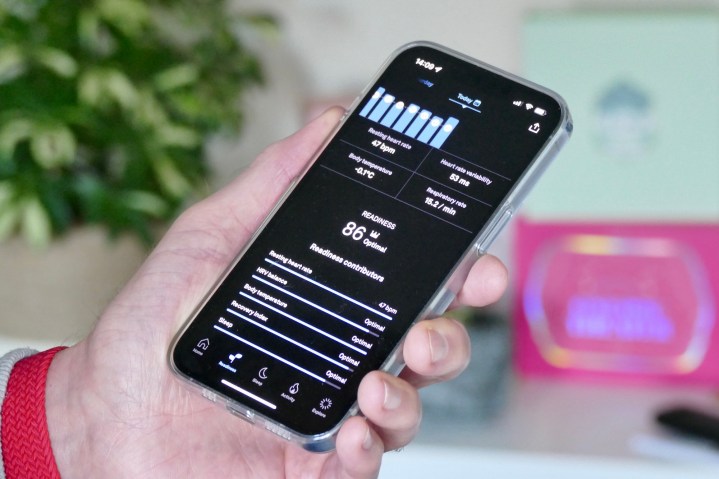
As a long-term Oura Ring wearer, the feature I’m looking forward to most in Apple’s WatchOS 11 is the new Vitals app.
It may look like just another extension of the Health app and the familiar Rings screen, but if it delivers on its promises of insights into your state of health, it has the potential to become invaluable.
What is Vitals?

Vitals is a new app introduced during Apple’s Worldwide Developer Conference (WWDC 2024) that will be part of watchOS 11 — coming later this year to the Apple Watch. It measures a selection of key metrics when you’re asleep: heart rate, respiratory rate, sleep duration, and blood oxygen levels.
A screen shows all these data points together, and it provides a status report on your sleep health. But if any look out of place, a notification alerts you to take a closer look at the Vitals app. For example, the Apple Watch may have detected a higher-than-average body temperature or a raised heart rate, and Vitals will show just how much it varied from your body’s normal state, letting you know about changes you may not even be physically aware of.
Apple says it has trained the Vitals algorithm to recognize unusual patterns using real-world data collected from the Apple Heart and Movement Study — an initiative started in 2019 with more than 200,000 participants through the Apple Research app. Why should you care about the data? Based on my time wearing the Oura Ring, information collected when you sleep can tell you a lot about your immediate state of health, and when you start to see trends, you’ll find it incredibly revealing.
Learning from the Oura Ring

Part of the Oura Ring smart ring’s appeal is its in-depth data and the superb way it’s presented in the app. Sleep tracking with the Oura Ring is superior to the Apple Watch’s sleep tracking, not least because the ring itself is so comfortable to wear. It’s also because of the simple-to-interpret insights into the way I sleep and how it can affect the way I approach the day.
Here’s how the sleep data specifically helps me understand and contextualize my health. If my heart rate is above a certain point and my respiratory rate is lower than usual, I know I’m likely dealing with stress, and it affects my sleep. Match this with an increased body temperature outside the normal expected range, and I may be experiencing the onset of a cold or other illness. Either way, my body is telling me something, and I can act accordingly, as well as justify and better understand the way I actually feel on the day.
I love this feature and the ease of viewing it with the Oura Ring. Sleep tracking without these metrics just isn’t informative enough, and years of wearing the Oura Ring has already given me a fascinating glimpse into understanding stress and how I can immediately see the warning signs through the Oura Ring’s app. It continues to help me to this day, and seeing a very similar system come to the Apple Watch is exciting — not only for me personally, but also because I am sure it will start to help others better understand and learn what sleep can tell them about their health on a daily basis.
One thing missing

While I’m all for the Vitals app and Apple’s continued push into improved sleep tracking with the Apple Watch, I’m disappointed that one metric is missing from the lineup: heart rate variability, or HRV. This is the measurement of time between each heartbeat, and it can be another great indicator of your overall health measured during sleep.
It’s a data point used to track your stress, wellness, and health, especially when paired with your resting heart rate. When HRV is low and your resting heart rate is high, it may mean you’re stressed or becoming ill, while the other way around means your body may be in a more relaxed state and everything is well. The Oura Ring uses these two metrics, along with several others, to help generate its daily Readiness Score. This very effectively tells you at a glance if you should attack the day or take it a little easier.
The fact that Vitals does not seem to include HRV means it probably won’t be able to entirely replace the Oura Ring as the sleep-tracking champion. It’s possible HRV’s somewhat difficult-to-quantify accuracy and usefulness may be behind Apple’s decision not to include it, but the Apple Watch isn’t a medical device, so it shouldn’t have played into it too much. It’s a shame, as I see it as an incredibly helpful piece of the sleep-tracking data puzzle.
When will Vitals arrive?

Even without HRV, I’m looking forward to trying Vitals out and seeing how the data compares with that of the Oura Ring, a wearable I’ve relied on to help better understand what happens to my body during sleep and how outside factors and my own mental state affect it.
Apple’s sleep tracking improved a lot with watchOS 10 and the Apple Watch Series 9, and Vitals looks set to take it a step further, but I’m going to need a lot of convincing it’ll become a better sleep tracker than the Oura Ring. However, if it works and works well, there’s a lot of potential for the Apple Watch to be a true Oura Ring alternative when it comes to sleep tracking.
I’ll find out if it can replace the Oura Ring when watchOS 11 is released during the fall, likely soon after the announcement of the Apple Watch Series 10.
Editors’ Recommendations

